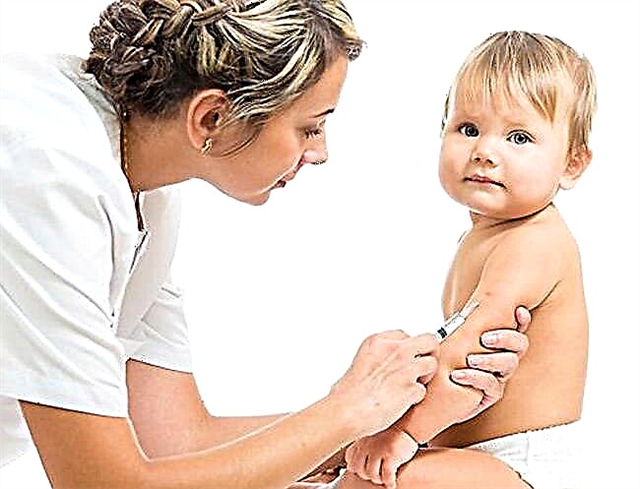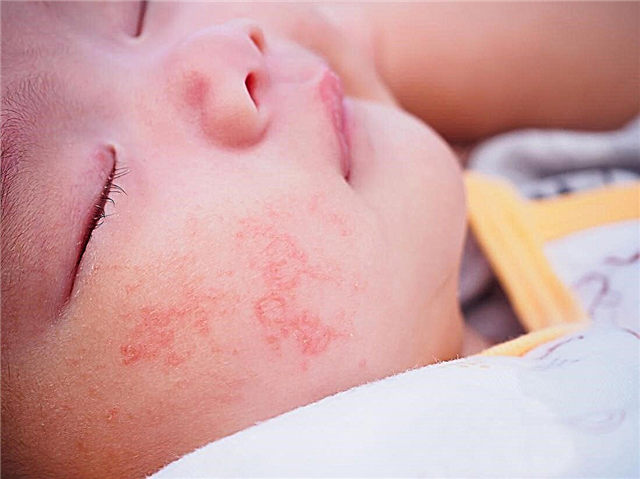
The inflammatory process in the end section of the cecum is called appendicitis. This disease occurs in people of different ages. Young children and adolescents can easily get it. Without timely medical care, this disease can be fatal or cause serious complications.

Causes and provoking factors
The causes of appendicitis can be completely different external factors. As a rule, inflammation occurs after hypothermia or decreased immunity. A child can also get this disease if he has chronic diseases of the digestive system.
An inadequate diet of low-quality foods can also easily cause inflammation in the intestines. The ingestion of large amounts of crude fiber can provoke acute inflammation of the end of the cecum, causing disease.

In babies, a common cause of appendicitis can be the so-called mechanical (or obstructive) cause. In this case, the intestinal lumen is blocked by some kind of mechanical obstacle. In babies, this is often caused by ingestion of foreign components (swallowed toys or other objects) into the stomach, and then the intestines, as well as worms and other parasites, fecal stones. In babies prone to frequent constipation or untimely discharge of feces, fecal accumulations may occur in the intestines, which will provoke inflammation of the wall of the cecum and even cause appendicitis.

The most rare cause of appendicitis can be congenital bowel pathologies. In this case, the baby is already born with an altered intestine. This can be an individual shortening of the length, as well as multiple bends or bends of the wall. In this case, appendicitis can also develop quite often under the influence of external factors.
Why timely diagnosis of appendicitis is important can be seen in the next video.
Kinds
Like any inflammatory disease, appendicitis can take several forms. If the disease has arisen for the first time and proceeds with sufficiently pronounced clinical symptoms, then this form is called acute. If, after the treatment provided, in which the appendix was not removed, appendicitis occurs again, then this form of the disease is called chronic. It requires the removal of the appendix in order to prevent future dangerous symptoms.

All acute forms of the disease can be divided into several types:
- Catarrhal form of the disease. In this case, the disease proceeds as calmly as possible and, as a rule, does not cause life-threatening complications. With this form, the inflammatory process captures the wall of the cecum and provokes the appearance of the first specific symptoms of appendicitis. If the surgery was performed on time, the baby is completely cured.
- Phlegmonous form of the disease... Already more dangerous, it can cause life-threatening complications. With this variant of the course of the disease, severe inflammation of the intestinal wall already occurs. Thrombosis of the vessels feeding the cecum is also possible.
- Gangrenous form. The most dangerous variant of the course of the disease. During inflammation with this course of the disease, the intestinal wall dies. This option can cause complications that are life-threatening to the child: a breakthrough of the wall and the release of all intestinal contents into the stomach (with the formation of peritonitis and shock). In this case, an urgent surgical operation with the removal of the organ is required. Only this measure will help keep the baby alive.

First signs
It is better for every mom to be familiar with the manifestations of this disease in order to easily recognize a dangerous problem at home. Defining this disease is not always easy.
Parents often think that the appendix is on the right side. However, this is not quite true. The appendix is very mobile. Anatomically, it can be located not only on the right. In 20% of babies, it is on the left side. For every 9 out of 10 children, it can even be located near the navel.


The onset of the disease can be completely nonspecific. For many babies, the onset of the disease occurs under the guise of a common cold. In the first days, the body temperature rises to 37 degrees, weakness appears, less often chills. The child becomes lethargic, eats poorly, refuses to play. Habitual activities do not give him any joy. The baby is drowsy, often lies, spares the tummy.

During the first two days, parents often cannot suspect appendicitis and begin to give the child drugs for fever, as with flu or acute respiratory infections. However, despite the treatment started, the effect is not noticed. Meanwhile, the child is getting worse. Symptoms that are more specific to the disease appear. Body temperature rises to 38-39 degrees. The child complains of abdominal pain.
In the first two days, the pain begins in the area near the navel. Then it gradually descends down to the groin or to the right half of the body. The pain increases significantly with a change in body position. The child may develop nausea or even vomiting. However, this is not an obligatory symptom of appendicitis.
It is important to note the nature of the pain in appendicitis. It can be different. Some babies feel pain in moderation, without sudden increases. Others have spasms. In this case, the pain first increases, then subsides a little. As a rule, in most cases, stool disorders do not occur. Only babies with chronic intestinal or stomach diseases can sometimes experience constipation or diarrhea, but these are non-specific signs of the disease.


Is it the same?
In children of different ages, the course of the disease can vary significantly. According to the latest scientific research, the peak incidence occurs at the age of 10 years, 12 years... In most cases, babies are not at all susceptible to this disease. Babies under 5 years old also get sick relatively rarely.
According to statistical medical data, every fifth person with appendicitis is a child aged 6, 7 years. More than half of all cases of inflammation of the appendix in children occur in primary and secondary school age. As a rule, these are children from seven to 14 years old.
Since the body of a three-year-old baby differs markedly, for example, from the body of a nine-year-old schoolboy, the course of the disease is also different.
Up to five years
For babies of this age, the gradual development of the disease is characteristic. Body temperature rises relatively low. Quite often, nausea or vomiting may occur. Children often become moody, eat poorly, and are very restless.
Babies under three years old often have thirst and all the symptoms of dehydration. The skin and lips become dry. The kid begins to spare the tummy, does not allow to examine or touch. In the first two years of life, crumbs can also often develop constipation or very loose single stools.


Up to ten years
In children, the body temperature rises to 37.5-38 degrees. In more severe cases of the disease - even up to 39 degrees. Babies are often nauseous, with no vomiting or stool problems usually occurring.
Severe abdominal pain is characteristic. When examining or trying to touch the tummy, it increases significantly. The child tries not to lie on the injured side, as this greatly increases the pain.

Teenagers over 12 years old
In many cases, appendicitis at this age proceeds according to almost the same scenarios as in adults. In the first couple of days, characteristic pains appear in the umbilical region with a gradual movement to the right half of the abdomen or groin. Often the body temperature rises to 37-37.5 degrees. The pain is often paroxysmal, without severe spasms.
Stool disturbances, nausea or vomiting are not common. But quite often there are signs of dehydration. The child's appetite decreases or is practically absent, weakness appears.
All symptoms of the disease are non-specific. It is often difficult to determine appendicitis on your own. In this case, you should definitely seek professional medical advice from a pediatrician.

Diagnostics
The appearance of the first symptoms of the disease is not yet a 100% method of making a diagnosis. Only a doctor can confirm appendicitis. To do this, the doctor will first examine the baby, conduct all special medical tests, which allow confirming the disease with sufficient accuracy at home.
For an accurate diagnosis, you need to take the child to the hospital. He will undergo several tests without fail. A clinical blood test will show if there is inflammation, as well as the severity of the development of the disease.

In difficult cases, when the diagnosis of appendicitis is difficult to establish, doctors resort to additional diagnostic methods. The surgeon will look at the baby first. The child may then have an ultrasound scan of the abdominal organs. This test will show the state of the appendix, whether there is inflammation.
Before surgery to remove the appendix, doctors will take blood from your baby for additional tests. This is necessary for future anesthesia and surgery.

Treatment methods
Inflammation of the appendix is a surgical condition. In most cases, when the diagnosis is confirmed, the inflamed organ must be removed surgically. Home regime in this case is extremely dangerous. Without the provision of timely qualified medical care, the baby may even die.
During your stay in the hospital, the baby will undergo all the necessary urgent diagnostic tests and analyzes. After confirming the diagnosis, the operation to remove the appendix will be performed in a fairly short time. Postponing surgery is very dangerous in many cases. This can lead to the development of peritonitis or septic shock in the baby.


Recovery from surgery usually lasts 10-14 days. At this time, the baby is assigned a special diet that spares the organs of the gastrointestinal tract. Vitamin therapy will help to quickly restore the child's immunity. All physical activities (and even more so visiting sports sections) are allowed one month after the operation, not earlier. Moreover, all physical activities should be introduced gradually. It is strictly forbidden to lift heavy objects over 5 kg (within three months).
Possible complications
The most common complications of appendicitis include:
- Development of peritonitis. If medical assistance was not provided in a timely manner or the disease proceeds in an aggressive and dangerous form, inflammation of the peritoneum may occur. This significantly worsens the prognosis and requires urgent surgery.
- Septic shock. In some cases, bacteria or viruses can also cause appendicitis. With reduced immunity, the child may develop shock. In this case, blood pressure drops sharply and the pulse becomes more frequent. The kid may even lose consciousness. The development of shock is life-threatening.
- Breakthrough of the wall of the cecum. If the disease was suspected late (or surgery was performed out of time), due to severe inflammation, intestinal contents may spill into the abdominal cavity. This is a very dangerous condition that can cause peritonitis or septic shock in a matter of minutes.
- Shock (due to dehydration). With severe symptoms of intoxication, severe symptoms of dehydration appear. This leads to a heavy load on the heart and blood vessels. The baby may develop tachycardia or arrhythmia.


Complications of appendicitis can occur in almost any course of the disease. If the baby has chronic diseases, lowered immunity, or receives corticosteroid hormones, the risk of complications increases several times.
Nutrition principles
After surgery to remove the appendix, the baby will be prescribed a special gentle diet while still in the hospital. For the first few days, babies are allowed to eat only pureed and low-fat foods. All dishes are prepared in a gentle way. As a rule, the menu contains only cereals, grated slimy soups and steamed lean meat.
Upon discharge from the hospital, the attending surgeon gives advice to mom what the baby can eat after the operation. A therapeutic diet is recommended for one to two months. This will allow the inflamed intestinal wall to recover quickly, and the weak children's body will strengthen.
The basic principles of nutritional therapy after surgery:
- Small portions of food. Babies should eat up to six times a day (in moderation). The volume and amount of food is measured according to age tables. Overeating in the postoperative period is very dangerous! This can lead to repeated inflammation of the intestines and provoke complications.
- Lack of very fatty, fried foods. All products containing smoked or marinades are also excluded. All food should only be lightly salted. Spicy and overly bright seasonings are prohibited. In the first month, only a little table salt can be added to food. From the fifth week after the operation, you can add a little black pepper. Sugar, vanilla, or some cinnamon can be added to sweet dishes.
- During the first two weeks after the operation, fresh fruits and vegetables can only be eaten after heat treatment. It is strictly forbidden to eat raw fruits with skin. Apples and pears are delicious after baking with a little cinnamon or powdered sugar. Try to limit the amount of unrefined fiber in your child's diet.
- Introduce fiber gradually... The basis of the diet in the first two weeks for the baby is well-cooked porridge, as well as meat products or poultry. You can use fish.
- Choose a gentle cooking method. Leave frying and grilling until the baby is fully recovered. The most correct cooking methods will be boiling or cooking in a multicooker, double boiler.
- Use well-cooked cereals as the right carbohydrates. You can add some pasta or noodles no more than 1-2 times a week. Prepare dairy-free cereals for the first two weeks after surgery. The addition of dairy products can lead to stool disturbance, to the appearance of diarrhea.
- Adequate water intake. After severe dehydration, the child's body really needs water (to replenish the lost reserves). Add fruit and berry fruit drinks, compotes, tea and plain boiled water to the child's diet.

Prevention
It is almost impossible to insure against appendicitis. At any age, this disease can be taken by surprise. but if the following conditions are met, you can slightly reduce the likelihood of appendicitis in your child:
- Food hygiene... Don't consume excessive amounts of coarse fiber. It is advisable to peel off fruits and vegetables before eating.The peel contains a lot of fiber, which in large quantities can provoke appendicitis.
- Prevention and control of helminthic invasions. Get your stool tested for helminths regularly. This will allow you to cure all parasitic diseases in a timely manner. Watch out for babies under five years old, they can often have pinworms. Instill in your baby the right habits: be sure to wash your hands before and after eating, as well as before and after using the toilet. Be sure to check whether the crumb has washed his hands after walking on the street or visiting any public place.
- Watch out for the scattered toys! Toddlers under three years old often pull all unfamiliar objects into their mouths to taste them. If foreign objects are swallowed, it can cause blockage of the cecum and cause appendicitis.
- All babies with immunodeficiencies and other diseases in which immunity is significantly reduced should be sure to be observed by an immunologist. Active and strong immunity is a guarantee of excellent protection against various bacterial infections, which can also provoke appendicitis in a baby.
- Dispensary observation by a gastroenterologist in the presence of chronic diseases of the gastrointestinal tract... If the baby has a disease of the digestive system that has not been treated in time, inflammation may occur at any time. Especially often, appendicitis can occur in babies with chronic colitis or cholecystitis.

Treatment of appendicitis must be timely and prompt. Delay in providing medical care for this disease is unacceptable! Only an emergency surgery will help cure the disease in time and save your baby's life. You can suspect the disease yourself, but you should definitely call an ambulance or a pediatrician.
What may indicate a child's abdominal pain, see the next video.



